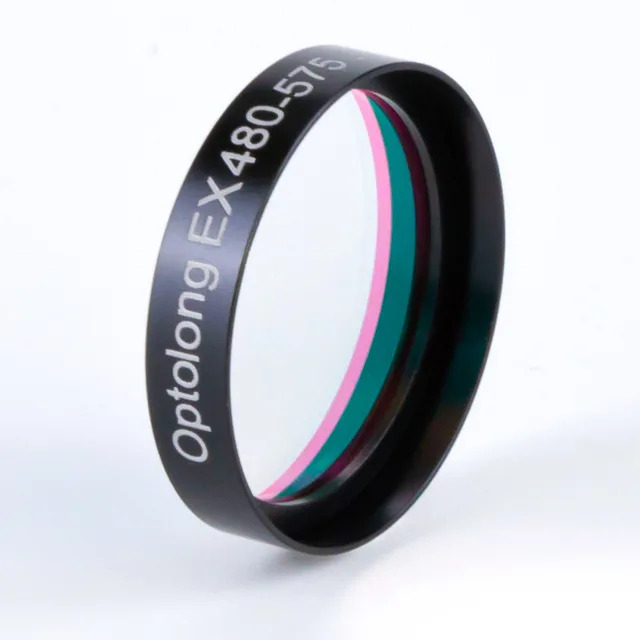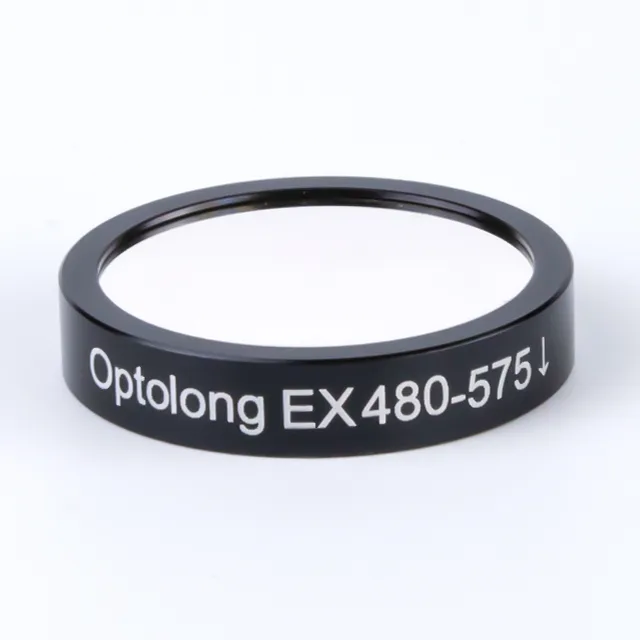Introduction
The quality and precision of your experiments or observations might be considerably affected by the excitation filter you use. In order to selectively transmit desired light wavelengths while blocking undesirable wavelengths, the excitation filter is essential. We will delve into the world of excitation filters in this post and examine the variables to take into account when determining which kind of excitation filter to utilize.
Understanding Excitation Filters
Excitation filters are optical filters created to block or attenuate certain light wavelengths while permitting passage of others. In several scientific fields, such as microscopy, fluorescence imaging, spectrophotometry, and others, they are commonly employed. Only the desired excitation light will reach the sample with the right excitation filter, improving contrast and lowering background noise.

Factors to Consider
Fluorophore Excitation Spectrum
When choosing an excitation filter, it is essential to take the fluorophore’s excitation spectrum into account. Every fluorophore has a certain wavelength range within which it absorbs light most effectively. You can maximize the signal-to-noise ratio and get the ideal fluorescence intensity by matching the excitation filter’s transmission range to the fluorophore’s excitation spectrum.
Emission Filter Compatibility
The compatibility of the excitation filter and emission filter is another crucial factor. The emission filter is in charge of choosing the fluorophore’s desired emission wavelengths while preventing any excitation light that has been dispersed. To avoid spectral bleed-through and maintain great image quality, it is crucial to make sure the excitation and emission filters are compatible.
Light Source Characteristics
Your light source’s properties also have an impact on the excitation filter you choose. Different light sources emit light at particular wavelengths or with different bandwidths, such as mercury lamps, LED sources, or laser diodes. You may choose an excitation filter that increases excitation efficiency and minimizes background noise by knowing the spectrum output of your light source.
Optical Setup and Microscope Configuration
The ideal excitation filter is heavily influenced by the optical equipment and microscope configuration utilized in your investigations. The excitation and emission routes can be influenced by the sample type, objective lenses, and microscope design. To make sure the excitation filter is appropriate for your particular setup and microscope configuration, it is crucial to take these parameters into account.
Application Requirements
With regard to excitation filters, certain applications might have particular needs. Minimizing phototoxicity or photobleaching, for instance, may be essential if you are working with living cells or sensitive samples. It may be useful in these circumstances to use narrowband excitation filters with good transmission efficiency. Your choice of the right excitation filter will be influenced by your understanding of the particular needs of your application.
What Type of Excitation Filter to Use?
The aforementioned considerations must be taken into account while selecting an excitation filter. What kind of excitation filter to use, however, is a topic that does not have a universally applicable solution. In the end, it will rely on how your particular experiment is set up, the fluorophores used, and the desired result.
Consult the technical parameters offered by the excitation filter’s manufacturer in order to make an informed choice. The transmission curve, bandwidth, and suggested applications are frequently included in these specifications. Additionally, depending on comparable experiments or applications, scientific literature and online resources might offer insightful analysis and recommendations.
Conclusion
For numerous scientific applications, getting precise and high-quality findings requires selecting the appropriate excitation filter. Examine the fluorophore’s excitation spectrum, the emission filter’s suitability, the properties of the light source, the optical set-up, and the demands of the particular application. You can choose the best excitation filter for your experiments or observations by considering these variables, reading technical specifications, and seeking expert advice.
In the sphere of scientific study, choosing the right excitation filter improves the specificity and sensitivity of fluorescence-based techniques, resulting in important insights and discoveries.

FAQs (Frequently Asked Questions)
Can I use a broad-spectrum excitation filter for multiple fluorophores?
The use of a broad-spectrum excitation filter for several fluorophores is possible, but there may be spectral bleed-through and a decrease in signal-to-noise ratio as a result. Use of narrowband excitation filters that correspond to the unique excitation spectra of each fluorophore is advised for the best outcomes.
Are excitation filters specific to a particular microscope?
Excitation filters are not unique to a given microscope, sorry. However, filter sizes and mounting options may vary between microscopes. It is essential to confirm that the excitation filter is compatible with the filter holder or turret on your microscope.
Can I reuse an excitation filter for different experiments?
As long as the fluorophores’ excitation and emission properties stay the same, excitation filters can be employed again and again in various experiments. To guarantee the best results, it is best practice to confirm the filter’s suitability with each new experiment.
How do I clean an excitation filter?
Care must be used when handling an excitation filter during cleaning to prevent damage the sensitive filter coating. It is advised to first remove any loose debris with a blower brush or compressed air before gently wiping the filter surface with a lint-free optical cleaning tissue or a fresh microfiber cloth.
Are excitation filters only used in fluorescence microscopy?
No, excitation filters are extensively employed in fluorescence microscopy because they can excite fluorophores in a certain way. However, they are also used in a number of other applications, including fluorescence spectroscopy, confocal microscopy, and flow cytometry.
Can I use a barrier filter as an excitation filter?
Barrier filters, often referred to as emission filters, are created to exclude unnecessary excitation light and transmit only the fluorescence that has already been produced. They are ineffective at transmitting the necessary excitation wavelengths, making them unsuitable for use as excitation filters.
